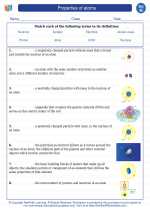Properties of Atoms
Atoms are the basic building blocks of matter. They are made up of protons, neutrons, and electrons. These tiny particles have specific properties that help us understand the behavior of matter at the atomic level.
Atomic Structure
The structure of an atom consists of a nucleus containing protons and neutrons, with electrons orbiting around the nucleus in various energy levels or shells.
Properties of Atoms
1. Atomic Number
The atomic number of an atom is the number of protons in its nucleus. It determines the identity of the element. For example, hydrogen has an atomic number of 1, while carbon has an atomic number of 6.
2. Mass Number
The mass number of an atom is the total number of protons and neutrons in its nucleus. It is used to calculate the atomic mass of an element.
3. Isotopes
Isotopes are atoms of the same element that have different numbers of neutrons. This results in variations in their mass numbers. For example, carbon-12 and carbon-14 are isotopes of carbon.
4. Electron Configuration
Electron configuration refers to the arrangement of electrons in an atom's energy levels. It determines the chemical properties of an element and how it interacts with other elements.
5. Valence Electrons
Valence electrons are the electrons in the outermost energy level of an atom. They are involved in the formation of chemical bonds and play a crucial role in determining the reactivity of an element.
Study Guide
Here are some key points to remember when studying the properties of atoms:
- Understand the structure of an atom, including the roles of protons, neutrons, and electrons.
- Learn how to determine the atomic number and mass number of an atom.
- Identify isotopes and understand their significance in the study of atomic structure.
- Master the concept of electron configuration and its impact on an element's chemical properties.
- Understand the role of valence electrons in chemical bonding and reactivity.
It's important to practice using the periodic table to identify elements and their properties based on their atomic numbers and electron configurations. Additionally, solving problems related to atomic structure and isotopes can help reinforce your understanding of these concepts.
.◂Science Worksheets and Study Guides Eighth Grade. Properties of atoms
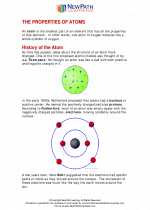
 Activity Lesson
Activity Lesson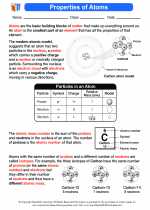
 Worksheet/Answer key
Worksheet/Answer key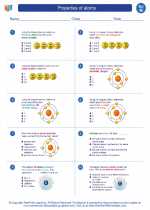
 Worksheet/Answer key
Worksheet/Answer key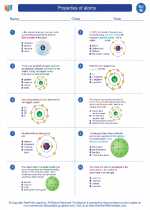
 Worksheet/Answer key
Worksheet/Answer key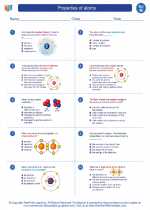
 Worksheet/Answer key
Worksheet/Answer key
 Vocabulary/Answer key
Vocabulary/Answer key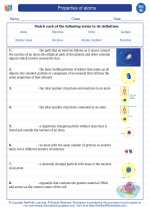
 Vocabulary/Answer key
Vocabulary/Answer key